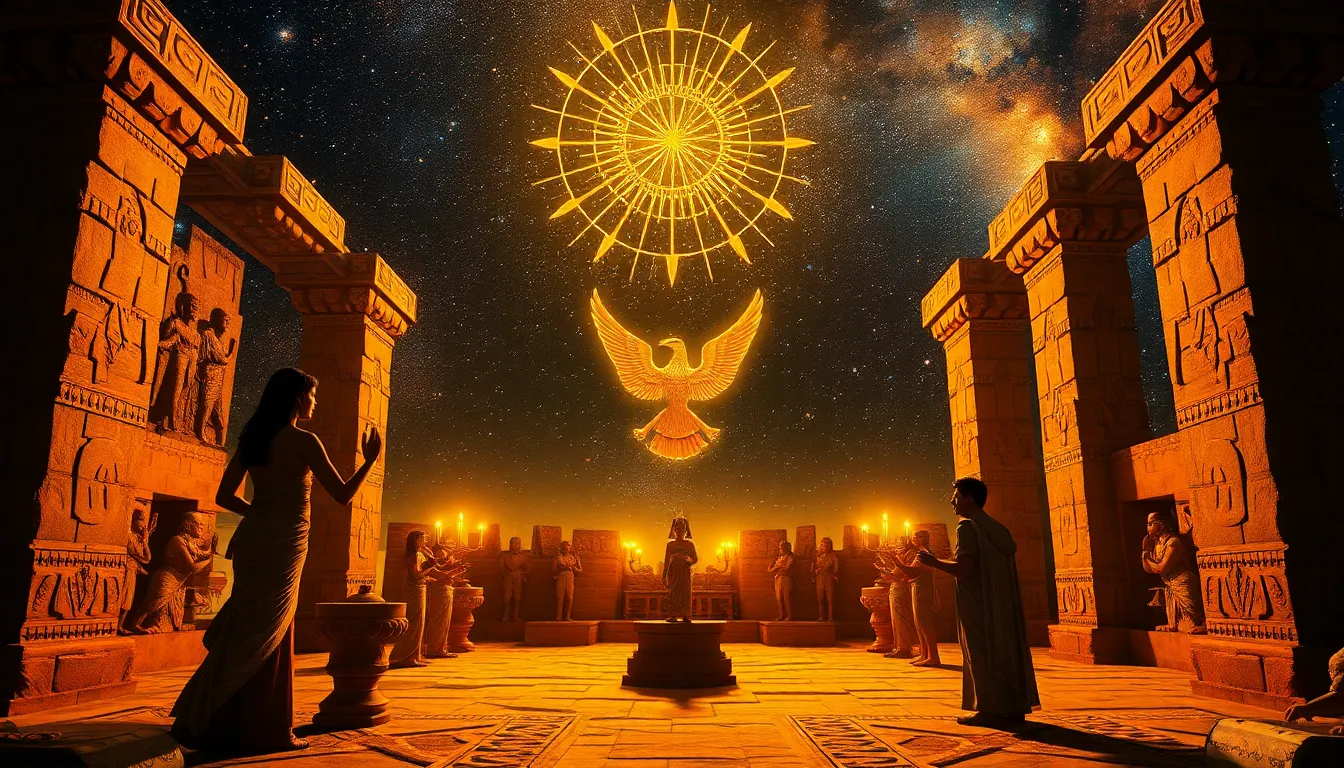The Role of the Stars in Ancient Egyptian Rituals and Ceremonies
I. Introduction
Ancient Egyptian culture is renowned for its rich tapestry of mythology, religion, and astronomical knowledge. The civilization, which flourished along the banks of the Nile River for thousands of years, placed immense importance on the stars and celestial bodies. Astronomy was not merely a scientific endeavor but intertwined with their religious beliefs, daily lives, and agricultural practices. This article explores the pivotal role of stars in ancient Egyptian rituals and ceremonies, highlighting their significance in various aspects of this fascinating culture.
II. The Significance of Stars in Ancient Egyptian Beliefs
The stars in ancient Egypt were viewed as divine entities, closely linked to the pantheon of gods and goddesses. The Egyptians believed that the heavens were a realm of the divine, and the stars were manifestations of their deities.
- Connection between the stars and deities: Many stars were associated with specific gods. For instance, the star Sirius was linked to the goddess Isis, while Orion was connected to Osiris, the god of the afterlife.
- Symbolism of constellations in mythology: Constellations held profound meanings and stories that informed the Egyptians’ understanding of their world. The arrangement of stars was often seen as a reflection of the creation myths and the ongoing cycle of life and death.
- Influence on agricultural and seasonal practices: The heliacal rising of Sirius, for example, marked the beginning of the annual flooding of the Nile, a critical event for agriculture.
III. Celestial Navigation and the Nile
The vast expanse of the night sky served as a natural compass for the ancient Egyptians. They relied heavily on the stars for navigation and to determine the timing of significant events.
- Use of stars for navigation and timing: Sailors and travelers used prominent stars to guide their journeys along the Nile.
- Relationship between the Nile’s flooding and star cycles: The inundation of the Nile was closely aligned with specific star appearances, creating a calendar that dictated agricultural activities.
- Rituals aligned with celestial events: Important ceremonies were timed to coincide with celestial events, ensuring that they were in harmony with the universe.
IV. Key Stars and Constellations in Rituals
Several stars and constellations played crucial roles in the religious and cultural practices of ancient Egypt.
- Sirius (Sopdet) and its role in the New Year Festival: The rising of Sirius heralded the start of the Egyptian New Year, which was celebrated with festivals and rituals that honored the goddess Isis.
- Orion and its association with Osiris: The constellation Orion was seen as a representation of Osiris, and its cycles were integral to the beliefs surrounding death and resurrection.
- The significance of the Big Dipper in agricultural practices: The Big Dipper, known as the “Great Bear,” was utilized in farming, helping to determine the seasons for planting and harvesting.
V. Astronomical Alignments in Monumental Architecture
The ancient Egyptians demonstrated remarkable engineering skills, and their monumental architecture often reflected their astronomical beliefs.
- The Great Pyramids and their alignment with celestial bodies: The pyramids of Giza are famously aligned with the stars, particularly with the constellation Orion, which was believed to be the earthly manifestation of Osiris.
- Temple orientations based on star positions: Many temples were constructed with precise alignments to specific stars, ensuring that they were oriented towards the heavens.
- Ritual significance of astronomical alignments in architecture: These alignments were not merely aesthetic but were deeply embedded with religious significance, connecting the earthly realm with the divine.
VI. Festivals and Ceremonies Linked to Celestial Events
The Egyptians celebrated numerous festivals that were intricately tied to their celestial observations.
- Major festivals tied to specific star appearances: The Opet Festival, for example, celebrated the annual flooding and the rebirth of the Nile, aligned with the rising of Sirius.
- Ceremonial practices during solstices and equinoxes: The Egyptians marked the solstices and equinoxes with rituals that reinforced their understanding of the cyclical nature of life.
- The role of priests and astronomers in these events: Priests, who often held knowledge of astronomy, played a crucial role in orchestrating ceremonies that honored the stars and their deities.
VII. The Legacy of Egyptian Star Worship in Later Cultures
The influence of ancient Egyptian star worship extended far beyond their civilization, impacting subsequent cultures and societies.
- Influence on Greek and Roman astronomy: The Greeks and Romans were heavily inspired by Egyptian star lore, adopting and adapting many celestial concepts into their own astronomical frameworks.
- Continuation of star-based rituals in subsequent civilizations: Many cultures that followed maintained aspects of star worship, demonstrating the enduring legacy of Egyptian astronomy.
- Modern interpretations of Ancient Egyptian star worship: Today, scholars and enthusiasts alike continue to explore and interpret the astronomical practices of ancient Egypt, finding relevance in contemporary spirituality and astronomy.
VIII. Conclusion
The stars held a vital place in the hearts and minds of the ancient Egyptians, influencing their rituals, architecture, and agricultural practices. Their celestial beliefs shaped their understanding of the world and the divine, establishing a connection between the earth and the heavens. The legacy of these beliefs continues to resonate today, inviting us to explore the profound intersections between astronomy and ancient spirituality. As we delve into the cosmos, we can appreciate the lessons and insights offered by the ancient Egyptians and their reverence for the stars.




